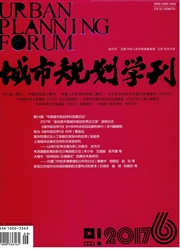

 中文摘要:
中文摘要:
公共空间.是城市物质环境与社会生活中最基本、最重要的元素之一。随着当代城市的发展模式由生产驱动向消费驱动的转型,“私有化、商品化、符号化”成为当今消费时代下城市公共空间的三大特点。这些深刻的变化引发了对当代城市公共空间的理论批判与质疑:不少研究者指出公共空间正日益成为“纯粹的消费场所”,一方面.其为公众服务的社会功能已明显“失落”了:另一方面。也有研究者指出当代公共空间仍然具备促进社会“融合”和提升公共生活“多元化”的能力.因此.公共空间并未失落,而是处于“演变”之中。总的来看,这些看似不一致的观点各自揭示了当代城市公共空间真实的一面:因此,采取一种“兼收并蓄”的态度有助于人们更全面地认识消费时代城市公共空间的本质,从而采取更切实有效的策略对公共空间进行设计与管理。
 英文摘要:
英文摘要:
Public space is one of the most fundamental and significant socio-spatial elements of cities. Along with the transformation of cities from locus of production to that of consumption, urban public spaces are threatened by privatization, cornmodification, and symbolization. Many critics argue that public spaces have largely lost their publicness, becoming 'settings for pure consumption'. On the other hand, many other researchers still see the potential of contemporary public spaces in promoting social diversity and integration. The latter argue that public spaces are simply in transition, rather than vanishing. In all, these opposing arguments reveal both positive and negative aspects of public spaces in an age of consumerism, which better inform the nature of contemporary public spaces a well as design and management practices in place making,
 同期刊论文项目
同期刊论文项目
 同项目期刊论文
同项目期刊论文
 期刊信息
期刊信息
